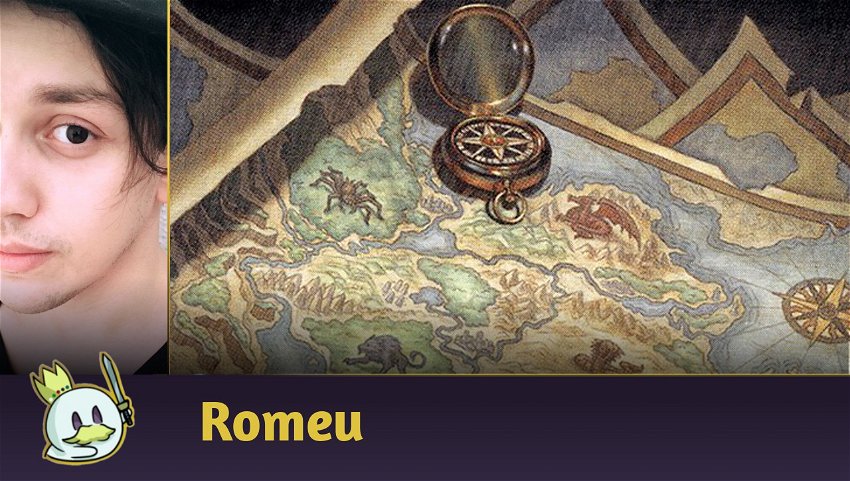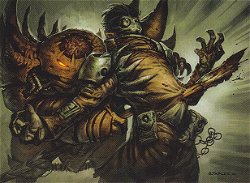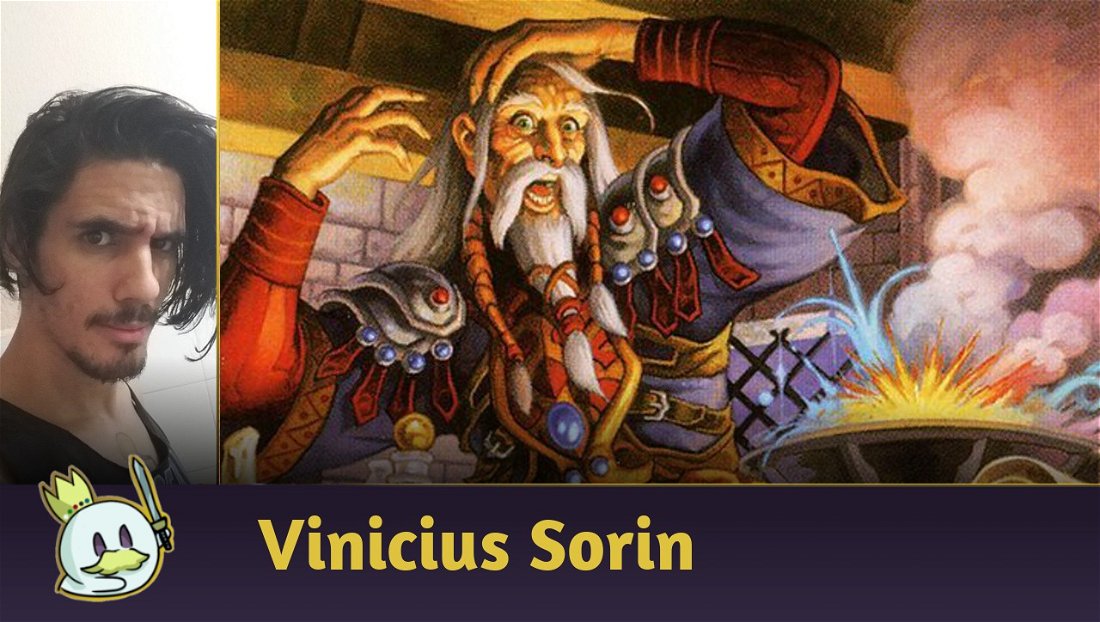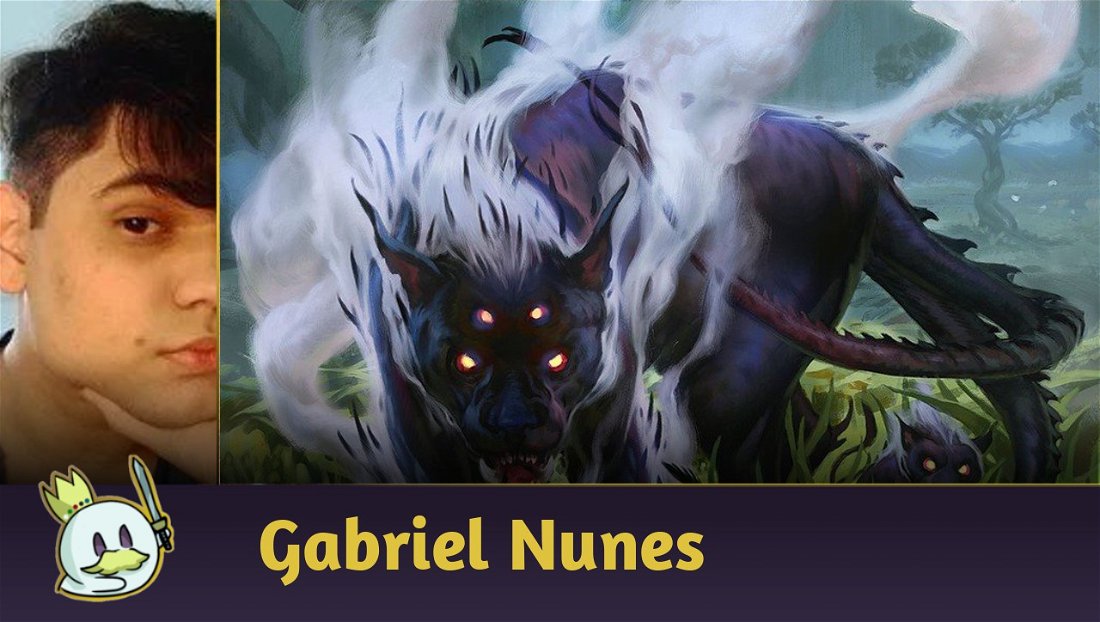In a completely unexpected announcement, Wizards announced yesterday changes for Modern, Pioneer and especially for Pauper, with the banning of the following cards:

And also with the unbanning of one of the pieces that used to constitute Tron's "core" in the past.

Despite significant community discontent with Rakdos Storm's rise in recent weeks, and also the notorious feeling that Atog's ban wasn't enough to take Affinity out of the position of the best deck in the format, I think it's safe to say that we didn't expect a change so quickly, when compared to other Pauper-related announcements that used to take six to nine months to actually happen even when the Metagame discrepancy was already evident, as was the case with Chatterstorm or Peregrine Drake.
In this regard, I suppose that the creation of the Pauper Format Panel really brought about a huge change in the way in which Wizards addresses the format's issues because there is now a specialized committee fully focused on evaluating the data and representative numbers and winrate, in addition to exercising a deliberate debate with their peers about which are the most viable options for bans and unbans, avoiding that way some kind of trouble when making announcements.
This does not mean, however, that the committee is foolproof, and I think we can better address this topic when we discuss Affinity in this article — but it is noticeable, both in the speed at which actions are taken, and in how the data are considered and evaluated, that Pauper is better off now than when the PFP did not exist.
That said, in today's article I intend to clarify a bit, based on my personal analysis, the (new) bans in Pauper and what we can expect from the Metagame in the coming weeks.
Expedition Map is unbanned, is it time for a Tron comeback?

Expedition Map was banned on July 13, 2020 as an attempt to contain and dismantle Tron's excessive consistency in finding its pieces, and ended up being one of the most flawed bans of the format because the archetype was already too consistent at playing the “fair game” without needing to speed up Tron pieces in as few turns as possible, unlike its Modern counterpart, where its initial goal is to search the lands to then cast bombs like Karn Liberated and Ulamog, the Ceaseless Hunger before the opponent can stabilize, while the Pauper version uses the mana boost to create an absolute resource disparity by casting more impactful spells in the same turn.
As a result of the artifact's departure, Tron lists began to adopt other ways of playing the game and filtering their draws, such as including Preordain, increasing the number of Impulse, or even with the inclusion of one or two copies of Crop Rotation. The thing is, the archetype didn't need Expedition Map to work well in the first place; it already played very well as a Control that would eventually explode in mana, which would cause it to gain a huge advantage and still have inevitability with Rolling Thunder.
What has changed since then, and justifies what became the first unban in Pauper's history, is that the absence of Bonder's Ornament and Prophetic Prism really hurt Tron in a way we've never seen before: The deck has become too inconsistent, and fail too much to accumulate resources because concessions are created to have access to lands and concessions are made to have access to colored mana, and it is no longer possible to have access to both simultaneously and still have good resource parity because every mana filter now costs one less card in hand, and every Urza's Tower, Urza's Mine or Urza's Power Plant now means less colored mana to cast your spells — and returning Expedition Map to Pauper can give Tron the possibility to gain additional consistency when searching for needed parts or finding lands that also filter mana, such as Cave of Temptation or Thriving Isle, making the archetype, which simply disappeared from the competitive Metagame, have a chance to earn a spot at competitive events.
In a particular opinion, I don't think a stronger Tron is healthy for Pauper: Its playstyle is absurdly parasitic, and a strong Tron means a greater difficulty for archetypes like Monarch or any other Control variant to succeed in the format, creating a polarized state that limits deckbuilding and Metagame diversity too much. But since then, there are two points that we need to consider when we talk about adding a new once-banned piece to the format:
The first is that Kamigawa: Neon Dynasty made Pauper a faster format with Experimental Synthesizer for various decks, and Moon-Circuit Hacker for Blue-Based Tempo, creating a space where we are seeing more archetypes which tries to play “under” returning to competitive scene, such as Stompy, while Late-Game strategies, like most Monarch decks, end up being left behind in the game due to the pressure established by the opponent in the first few turns, making casting Palace Sentinels or Thorn of the Black Rose quickly no longer as advantageous as it used to be a few months ago.
The second is that Tron is a predatory archetype for the Midranges, and if the format resolves itself around Monarch (which, it is worth noting, is also a parasitic mechanic), or other strategies geared towards long and grindy games, it is important to have an archetype that can play “over” them and inevitably dominate the game, as long as it cannot also control Aggro and other archetypes that seek to play under and win the game before the opponent can stabilize.
I'm a bit concerned about what a Tron return could mean for the format in the coming weeks, but I think Expedition Map won't be enough to return the archetype to the position of dominance that it had before losing Prophetic Prism and Bonder's Ornament, at least as long as new sets don't release a sequence of cards that fit perfectly into the archetype's proposal.
But what about non-fog versions?
Well, I don't see a problem with the existence of these versions: Marauder Tron was a very interesting archetype for the format which produced occasional results, and the other variants never proved to be as worrisome as the Control version.
Galvanic Relay is proof that Storm cannot exist in Pauper

For Storm to exist in Pauper, it needs to be “manufactured”. Otherwise, it will break the format.
One of my worst misjudgments was being skeptical of how much Galvanic Relay could be problematic for the format for the mere fact that it didn't allow you to cast your cards on the same turn as the combo, and neglecting that it's almost a Mind's Desire with a delay of four mana, that is, comparable to a card that is banned from Legacy and restricted in Vintage.
It didn't take long for the archetype to consolidate and acquire the impressive mark of 60% Winrate, an absurdly alarming number even when compared to other predominant archetypes of the past, and that quickly and without any surprise: Storm is the most powerful “free win” deck ever in Pauper (and the only archetype comparable to it in that regard would probably be Infect with access to Invigorate), as it has access to an extremely consistent gameplan, that does not or usually requires interaction with the opponent and proposes an absolutely fast and explosive play pattern that allows players to quickly move between leagues to farm rewards. In other words, with some practice and understanding of how it works, when there's an efficient Storm deck in the format, there's no reason to play with literally anything else.
What is strange to me, however, is that its consolidation in the post-Neon Dynasty competitive scene came from a combination that is not specifically from “Storm cards”.

The Experimental Synthesizer and Deadly Dispute combo is virtually an Ancestral Recall where all resources used in it are also impressive with Storm's proposal, with the card exiled by Synthesizer in both instances being able to be cast at a very low cost, and Dispute's Treasure token serving as a powerful manafixing, and both of which added far too much value to a Storm variant that simply didn't need a wincondition with the mechanics to win the game anymore, just means of gaining access to a massive amount of cards in a single turn so that your wincondition (in this case, Kessig Flamebreather) does the game-ending work.
With the end of an absolute card advantage mechanic for Storm, we will likely see the return of "improvised Storm" decks, such as Cycling Storm with Reaping the Graves and the Marauding Blight-Priest with Weather the Storm combo, but it won't surprise me to see other variants with Kessig Flamebreather or even Kiln Fiend popping up at some point, merely because Deadly Dispute + Experimental Synthesizer is the most powerful thing you could be doing in Pauper today, which brings us to the next ban.
Affinity lost another combo-kill, but remains as the format's best deck

Affinity has moved from a purely Aggro deck to a multidimensional threat with different lines and with the addition of a variety of cards that have simply pushed it to the edge of the top of the format, and gradually we are seeing it being dismantled to be on par with the rest of the Metagame without totally losing its recent improvements, and the PFP's latest proposal to deal with its dominance is to remove its alternate win lines that offer a "free-win" situation with extreme ease, limiting it to the beatdown plan (or multiple activations of Makeshift Munitions) to win the game.
However, Affinity is still excellent at maintaining the best board position in the format for a low cost by having access to Myr Enforcer, Frogmite and even Gurmag Angler, and it also has the most synergistic card advantage engines with Deadly Dispute and Experimental Synthesizer, in addition to Blood Fountain and Reckoner's Bargain, to the point where the Grixis versions have become less relevant as Thoughtcast has become redundant when you can get access to three or more cards pretty much every turn, and that mix won't simply dissipate from the competitive landscape as long as you can play around targeted hate.

And that's why we need to mention Modern Horizons II's Bridges: They are what make Affinity what it is, the mechanics always had the potential to break the format and never did because there were numerous compromises to be made when it came to you build your list, such as the need to balance color requirements, how many mana filters to use to keep from getting mana screwed, which threats can and cannot be easily cast, and the constant challenge of maintaining a keep in Game 2 or 3 considering the possibility of a Gorilla Shaman or Shenanigans on the other side of the board — and Bridges removed all those concessions in exchange for the raw speed the deck had, but it never had much trouble transitioning to a Midrange-ish deck, as the Jeskai variants with Kor Skyfisher were trying to achieve in 2020, including adding some Thriving Lands to increase consistency.
In other words, as long as Bridges exist in Pauper (and despite Gavin mentioning that they aren't afraid to ban them if necessary, we have to admit that it would be a historic milestone to have a full card cycle banned from the format), Affinity will continue to be the best deck because it can do most of the functions of other archetypes, but more efficiently, and every new artifact or iteration with artifacts that comes out in new sets will help to maintain its Tier 1 position, and few archetypes really can, without large amounts of dedicated hate, dealing with this mixture of fast and efficient clock, card advantage and inevitability with Makeshift Munitions.
Does that mean I believe the Bridges should be banned? At the moment, I don't think so.
I like having Affinity as the best deck in the format after years of seeing Faeries, Tron and Monarch being at the top and leaving no room for other archetypes. At the very least, its rise means that other decks can come out and try to compete, and the speed boost in one or two turns has made Pauper games more fruitful and less geared towards constantly accumulating resources based on who can keep the Monarch longer or who casts more Ephemerates. In other words, I believe that the inclusion of Affinity at the top of the Metagame was, with the appropriate bans, beneficial for the format's diversity, but also that its representation should be a bit lower than it was in recent months; we can't have an "absolute best deck" against the rest, and it's precisely this kind of situation that these recent bans seem to be trying to fix without killing Affinity outright.
The problem, however, is that this situation seems, using a hyperbolic example, a “Hogaak situation”, where there is no point in banning complementary pieces that speed up or make the deck more efficient (in Hogaak's case, it was Bridge from Below) when the problem lies in the heart that makes the rest work.
As for Affinity, that heart is its manabase.
And which direction should it take now? There are several options.
I've seen many players mention that without Disciple of the Vault, it's likely that Jeskai Affinity could make a comeback, and despite considering that this is a real possibility and that some players will run this version, especially since you'll have access Kor Skyfisher and Glint Hawk along with Experimental Synthesizer, plus Thoughtcast and Gearseeker Serpent, I suppose the combination of Synthesizer + Deadly Dispute will still be the best thing to do in Pauper.

Or more specifically, I consider Deadly Dispute to be the best card in the format right now.
The Adventures in the Forgotten Realms' Instant has simply changed the entire Metagame and is commonly compared to Ancestral Recall by many format grinders when combined with Ichor Wellspring, Experimental Synthesizer and Chromatic Star, in addition to being an essential piece for several other archetypes, such as Moggwarts or Rakdos/Jund Metalcraft, making it Pauper's main pillar today.
I think it's important to point out that I agree with Gavin Verhey when he mentions Patrick Sullivan's theory of replacement value, which means that a card like Deadly Dispute has a low replacement value because there are other effects that do the same thing, like Reckoner's Bargain or even Costly Plunder, but I also think they might be underestimating how much the extra mana and artifact left makes a significant difference in resource handling during a matchup, especially with Affinity
And looking at the Black-Based versions, there may be an increase in the number of Experimental Synthesizer and Gurmag Angler as additional threats, and that the archetype fully enters the Midrange category, including the possibility to return to the Grixis variants running Gearseeker Serpent and Thoughtcast, or even decide to follow the path of a Jund Affinity with Carapace Forger as a fast clock.
But regardless of the direction the deck takes from here, the only certainty I have is that Affinity will probably remain as the best deck in the format in the coming weeks.
Conclusion
That's all for today.
I'm choosing not to delve too deeply into how other cards like Experimental Synthesizer or Moon-Circuit Hacker should be on a watchlist as I believe we are, again, in the "wait and see" period before dropping statements with little or no substantiation and that doesn't have a smattering of anecdotal evidence.
I believe that Faeries will continue to be one of the main competitors today, and probably the Dimir version has become better with the absence of a combo-kill for Affinity that escaped from Snuff Out, while Kuldotha Boros, who returned to the Metagame thanks to the new artifact, and Boros Bully should also remain as forces present in the competitive scene in the coming weeks, but I don't think the Metagame will change that much compared to the pre-Rakdos Storm era, as there will still be a predominant archetype and the format is based around ways to obtain card advantage at the lowest possible cost.
That said, I can envision a future where removal-based decks like Mono-Black Devotion or Orzhov Monarch can do well in a combat-focused scenario, but I'm not confident Monarch has enough to compete as well today as it used to, and the same can be said for Tron which, despite having Expedition Map back, still seems to me too inconsistent to match Pauper's current speed.
I'll be following the unfolding of the latest Banned and Restricted announcement over the next few weeks, and after a fortnight you can look forward to an initial post-ban Pauper Metagame review.
Until then, stay away from the panic button and look to enjoy the format, its changes, and the decks' adaptations as they arise.
Thanks for reading!














— Kommentare 0
, Reaktionen 1
Sei der erste der kommentiert